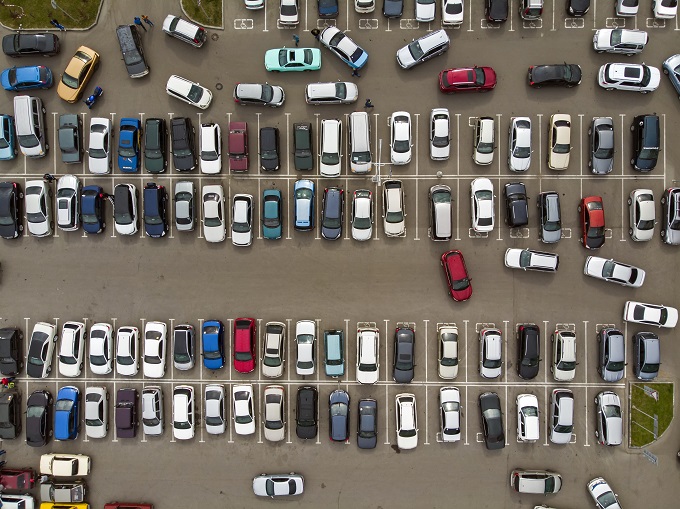
diy13 © - stock.adobe.com
School migration might help slow rising obesity levels and improve independence skills; but it is never going to be possible 100 percent of the time for all families and increasing foot traffic around school carparks has its own dangers.
Sorry to bring up the dreaded C-word, but because of post-COVID restrictions the number of cars rolling in and out of your school may even increase. As we continue to navigate this global pandemic, social distancing will likely come in waves, and parental anxieties may increase to the point that they feel more comfortable dropping their kids to the school gate rather than allowing them to use a crowded bus or walk with a group of friends.
At peak parking times, dangers around the school site and parking areas can escalate very quickly, with tens to hundreds of stressed adults, cars and children thrown together, vying for a park or weaving through a pick up zone. It really is a melting pot for potential disasters.
However, risks can be managed with simple planning and easy-to-introduce measures. Let us examine some of the risks and how to reduce them…
Distracted drivers, cyclists, pedestrians, or children. The school run is the perfect time to become distracted because so much is going on. Studies also show that drivers admit to being more likely to use their phone to call or text while driving through a car park or while waiting in traffic. On top of this, during hectic times (like pre-Christmas) drivers, and pedestrians are hurried and more likely to be pre-occupied by their to-do lists.
De-escalate distractions. Have well-planned and clearly marked traffic flow with lanes in and out of your school property. Use signs to check bad behaviours, and remind drivers, pedestrians, and cyclists to ‘Think’, ‘Be Aware’ and ‘Look Out’ for dangers. Bollards and barriers can also be used to direct cars and block off areas to decrease risks to pedestrians.
Ease congestion. At high-use times you might consider introducing slightly staggered pick up times for varied year groups. Have cycle lanes, walking paths and bus parking zones.
Improve visibility. Parking areas are riskier than you think especially when visibility is poor and congestion is bad, do you have well signed lanes and prevent cars from cutting across parks? Use a one-way system alongside ‘STOP’ and ‘No-Parking’ signs, plus reminders to be mindful of other vehicles, pedestrians and aware of small children and parents with baby strollers using the area.
Speed reduction. According to New Zealand Police road safety advice guidelines, driving below the speed limit and to weather conditions reduces death and trauma on roads. They state: “Everyone travelling a few kilometres slower makes us all safer. With even a small decrease in average speed, we see a decrease in the number of fatal and injury crashes”.
It is vital that drivers in and around your school property must slow down and if necessary slow to a snail’s pace, especially during the most congested periods. Warning signs can help but you may need to consider the use of speed bumps.
Speed bumps. The sole aim of speed bumps is to slow down cars and traffic, installing speeds bumps can slow cars down up to about 8kmph going over the humps and about 30kmph between humps depending on the distance between each. Slower speed means drivers have more time to spot hazards and react accordingly to prevent any accidents or collisions.
Of course, even at slow speeds, there is a chance that accidents could still happen, but speed bumps reduce braking distance and reduce energy transfer upon impact and this will greatly reduce the risk and damage to any person or vehicle involved. Speed bumps can be sourced in a variety of heights to minimise inconvenience to drivers and you can even get portable speed bumps, these are easy to install and remove and could offer the most flexible solution to your needs.
Repairs. Maintain and update your property and repair potholes or cracks in pavements and roads, keep your grounds clear of debris, improve lighting, and beware of any surface that is prone to developing puddles, snow, and ice. Remember that slips, trips, and falls are also common accidents in car parks.
Expand or re-vamp your parking. Decide on the minimum number of parking spaces you need and check with your local council for specific requirements relating to your school size and zone. Make sure you provide sufficient parking for people with disabilities and if your school roll has grown make sure you also have funding to provide new car park spaces. Visit the Standards NZ website for more information about the specific requirements for off-street parking for people with disabilities.
Develop your own car parking policy. It is recommended that you develop a parking policy about the use of car parks on your school site. You should have a sound management strategy in place, not only for the school run but also for visitor parking, staff parking and student parking. Likewise, have a policy for managing special events like school fairs and work towards effective management of these problems, solutions may include encouraging people to walk to school, carpool, use public transport or introduce a park and ride system. Some electronic management systems can even provide live updates on your school website about how many spaces are available, or how congested the school gates have become.
Educators and politicians are trying to address the current teaching shortage through different policy settings.…
Melanie Webber was the president of the secondary school union PPTA Te Wehengarua from 2021…
Wait times for paediatric care is having an impact on young people’s education and the…
Home of the brave, land of the free… except when it comes to books for…
Could a gender achievement gap in maths be due to confidence? Sarah Buckley from the…
The much-delayed English draft curriculum is now out for consultation, generating discussion from teachers.
This website uses cookies.